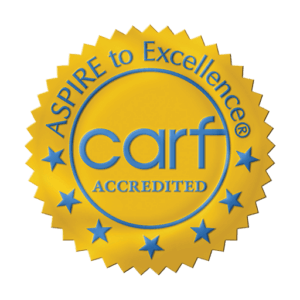The National Institute on Drug Abuse (NIDA) describes addiction as compulsive drug-seeking regardless of harmful consequences to oneself or others. However, addiction is not a particular diagnosis included in the Diagnostic and Statistical Manual of Mental Disorders (DSM-5).
What is the DSM-5?
The DSM-5 is the classification and diagnostic tool published by the American Psychiatric Association (APA), which functions as the primary authority for clinicians and practitioners diagnosing psychiatric conditions. It contains descriptions of these conditions and lists their symptoms.
In its fifth revision, published in 2013, categories such as “substance abuse” and “substance dependence” became one category called “substance use disorder” or SUD.
SUDs Symptoms, Subclassifications, and Diagnostic Criteria
There are three subclassifications associated with SUDs and their symptoms:
- Mild
- Moderate
- Severe
The symptoms linked to SUDs include four major groups:
- Impaired control
- Social impairment
- Risky use
- Tolerance and withdrawal
There are diagnostic criteria that the DSM-5 uses to describe the severity of the substance use using the three subclassifications. Those with two or three diagnostic criteria have a mild disorder, four or five indicate a moderate disorder, and having six or more indicate a severe disorder. The diagnostic criteria include:
- A constant desire or unsuccessful effort to lessen or control one’s use of the substance.
- One is taking the substance regularly in larger amounts over a longer period than intended.
- One is spending a large amount of time on getting the substance, using the substance, or recovering from its effects.
- Cravings occur, or one experiences strong desires to use the substance.
- Persistent use of the substance leading to failures in accomplishing major obligations at school, work, or home.
- Substance use continues regardless of constant or recurring social problems.
- Substance use causes one to lessen or give up significant recreational, occupational, or social activities.
- Substance use persists when it is physically harmful.
- Substance use continues regardless of recurring psychological or physical problems caused by or made worse by the substance.
- Tolerance, or needing more of a substance to achieve the same effects.
- Withdrawal, or symptoms that occur after ceasing substance use.
Need Help?
The criteria for diagnosing a substance use disorder may have changed in recent years, but the disease of addiction itself has not. Addiction, now known as substance use disorder (SUD), is a chronic disease that differs from person to person and develops despite one’s environment, age, race, or gender.
At Alta Loma Transformational Living, you will meet knowledgeable, compassionate professionals that understand addiction in all its forms. Alta Loma uses an integrative and holistic approach to treat addiction and mental health issues.
No treatment is one-size-fits-all, where you will have a team of experts prepared to create your customized treatment plan. We offer care for your mind, body, and spirit, so that you can heal from the inside out and look forward to a lifetime of sobriety and wellness.
If you are ready to take the first step in your recovery, please call us at 866-457-3843.






